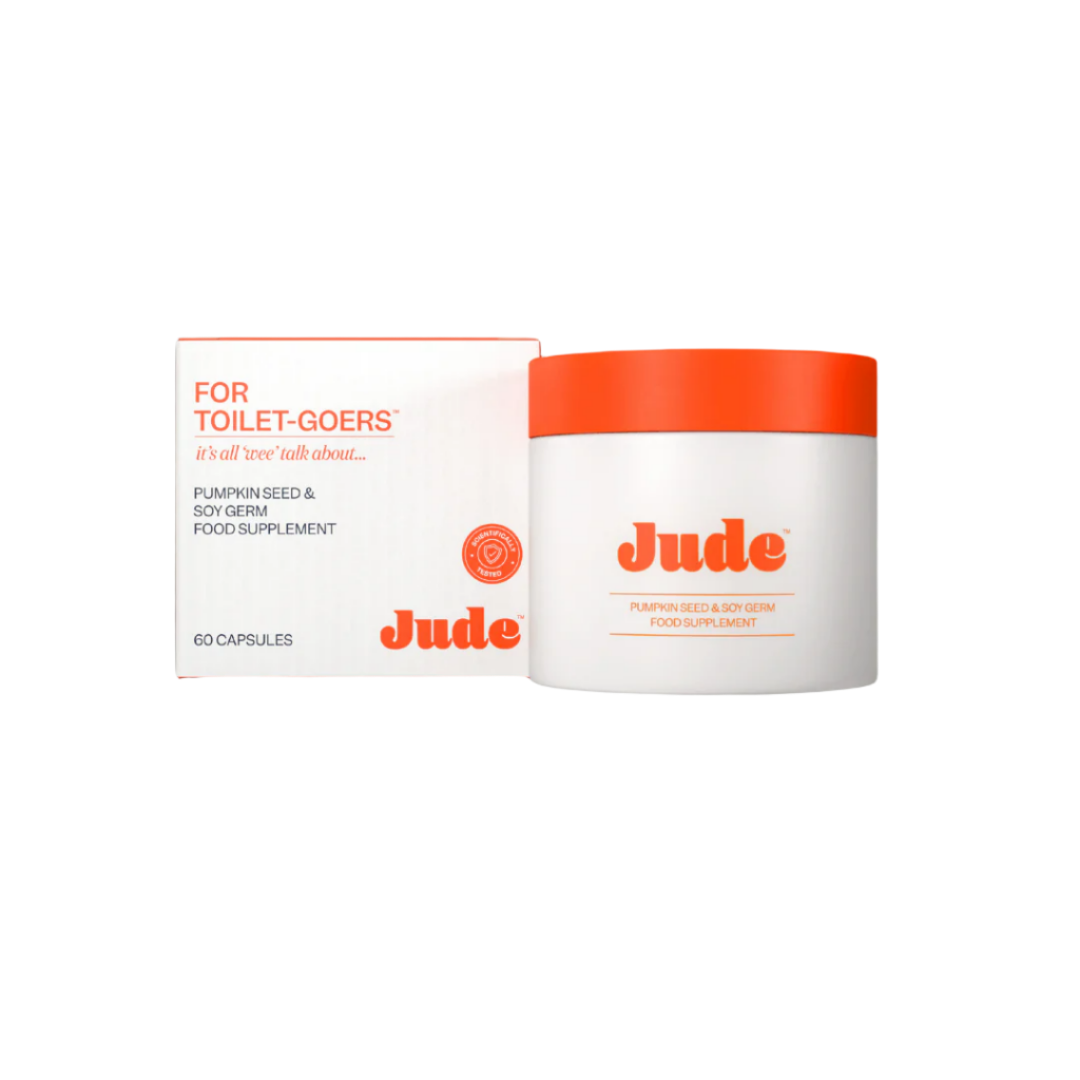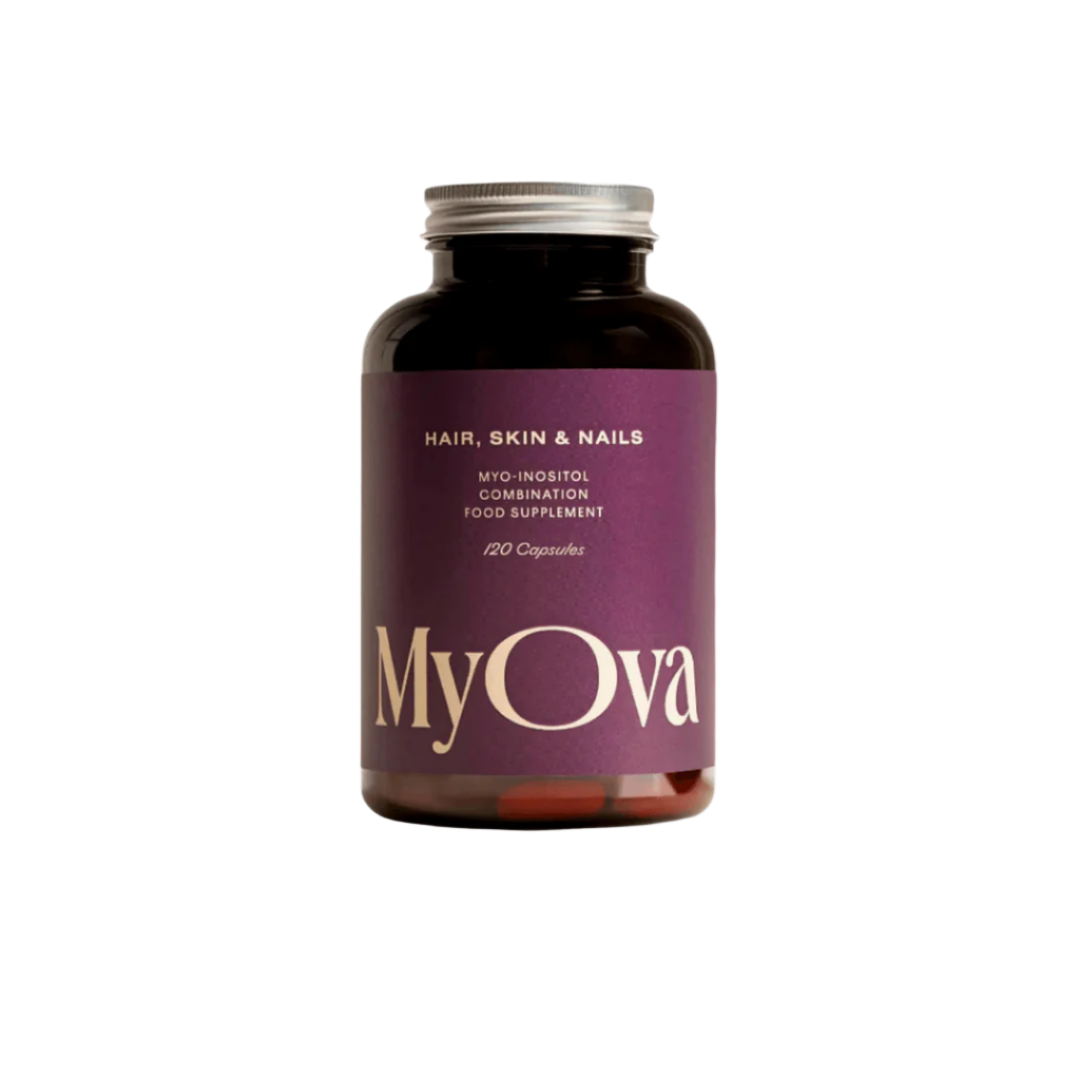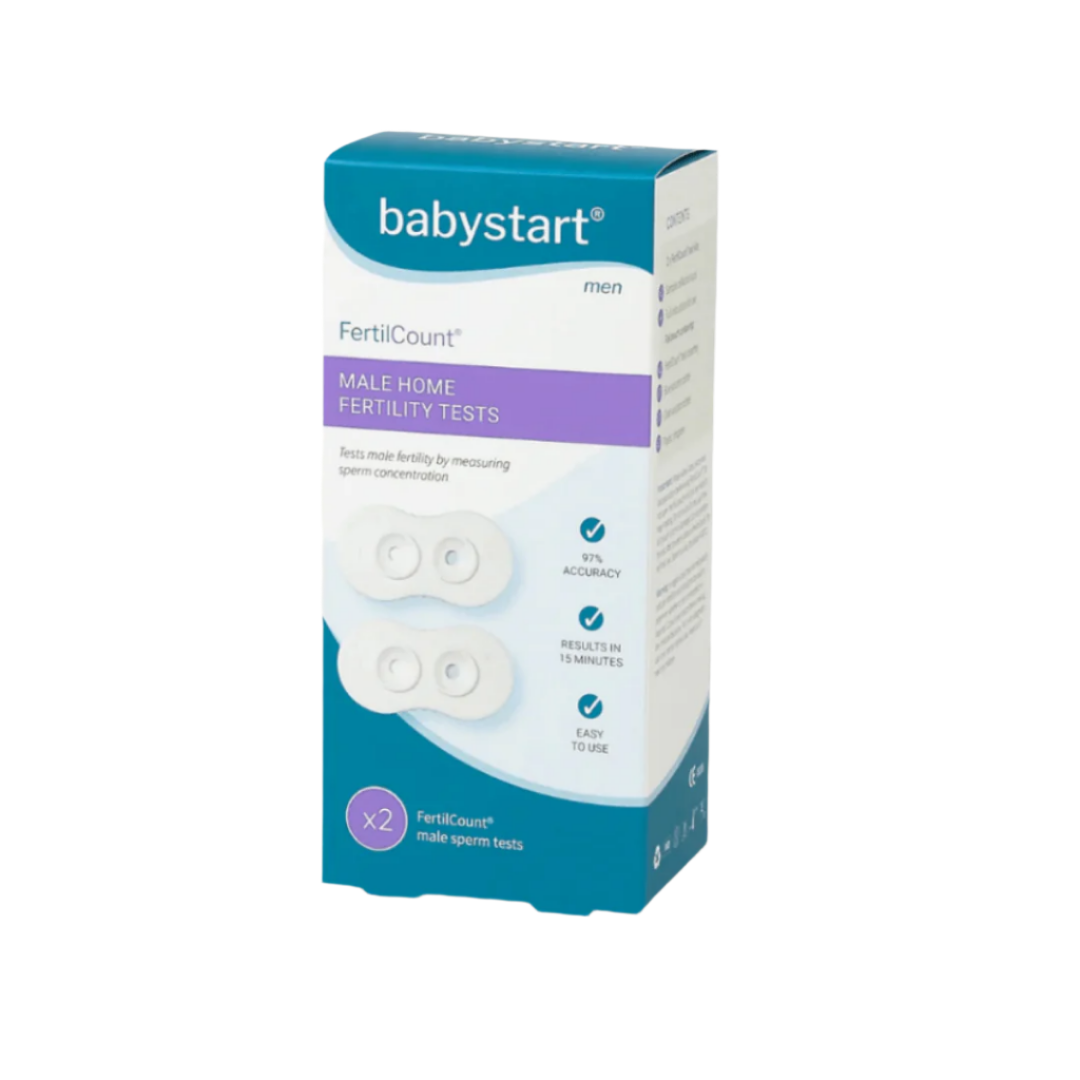The Journal
International Day of Women and Girls in Science
Recognising the critical importance of women in the STEM sector, particularly in leadership roles, femme health emphasises the need for diversity and inclusion to drive innovation and address pressing healthcare challenges. By amplifying women's voices in senior STEM positions, fresh perspectives and insights are brought to the table, fostering creative problem-solving and influencing research agendas to prioritise issues like sustainability and socioeconomic pressures. As a female-led company with one of the only female managing directors in the IVD industry, we are really passionate about the importance of women in business, but particularly in the STEM (science, technology, engineering and maths) sector. Including more women in senior STEM roles is critical for innovation. Bringing women to the table will lead to fresh ideas and perspectives, as well as encouraging creative thinking and problem-solving. Women’s perspectives will also shape the direction of research and strategic direction, as women tend to focus on different issues such as sustainability and socioeconomic pressures. Finally, including women in senior STEM roles may also help to close the gender health gap. The UK currently has the worst gender health gap in the G20 meaning that women receive poorer healthcare than men. This is mainly due to a lack of research into women’s health; for example, there is 5 times more money spent on erectile dysfunction (which affects 19% of men), than on premenstrual syndrome (which affects 90% of women). At femme health we are committed to working with brands who share our values and our hopes for the standard of reproductive care in the UK. Hear more from some of these brands on the importance of focusing on women’s health as well as promoting and nurturing women in STEM roles. Find out more about Proov Dr. Amy Beckley is the founder and CEO of Proov, and the inventor of the first and only FDA-cleared at-home PdG test to confirm successful ovulation. Amy has an MBA and a PhD in Pharmacology, and has studied hormone signalling for over 20 years. When Amy was trying to get pregnant, she suffered nearly seven miscarriages – and no test or doctor could explain why. She ultimately turned to IVF to have her son. It was only after she uncovered the source of her troubles – a problem with ovulation – that she successfully conceived, this time without the help of IVF. She then set out to create an accurate, effective diagnostic to empower women to test at home. Amy invented the PdG test in her basement, commercialised the original Proov technology through crowdfunding in 2016 and launched it officially in 2017. Now, Amy and Proov offer an array of at-home diagnostic tests and support to help women get pregnant faster. Proov's flagship product remains the PdG test, which is a way to understand if you have insufficient progesterone in your system. Amy calls it “successful ovulation” as opposed to just ovulation. What that means, is “ovulation” means producing an egg; successful ovulation means you produce an egg and have a healthy uterine environment because it saw enough of this hormone for long enough. Proov has a patented method that measures the implantation window. By measuring a hormone called PdG in urine 7 to 10 days after peak fertility, women find out if they have enough of this hormone for long enough to have the maximum chance of conception. For the UK customers whose PdG results are suboptimal, Proov has entered into a clinical partnership with Plan Your Baby. UK Proovers whose ovulation report shows low levels of PdG may choose to make an appointment online (for a fee) with a certified Plan Your Baby Fertility doctor who, after assessment of results may prescribe Progesterone supplementation. Just with a click, no need for in person visits, referrals or waiting lists. Shop for Proov Predict here We love Ovum OVUM felt the fertility industry takes advantage of women at what is arguably one of the most vulnerable times in their lives. Many of us would just about buy or try anything if we felt it improved our chances of conceiving. Jenny started OVUM when she began trying to conceive themselves and wanted clarity on what exactly they could be doing to improve their chances, from a medical and scientific perspective. No BS, no falling for the misleading advertising, no herbs and voodoo baby dances - they just wanted to know what they could be doing to genuinely help their chances whilst still keeping sane. The benefits for those taking these prenatal, conception and fertility supplements aren’t what they could or should be. Cheaper and less absorbable forms of vitamins, minerals and antioxidants are used and often in lower, inefficient dosages where profit takes priority over efficacy. Once they’d done their homework it was clear that today’s prenatal, conception and fertility supplements fall short of what should be available as the new standard to all. For this very reason they will soon become a B Corp (certification pending), making OVUM a company that pledges to use business as a force for good. Certified B Corps are businesses that meet the highest possible standards of verified social and environmental performance, transparency and legal accountability to balance profit and purpose. OVUM is vegan, not tested on animals and BPA and all plastics-free packaging. You can find out more here. At OVUM they’re about letting the research guide their Scientists and Fertility Doctors who in turn determine the formulation of our fertility supplement. So, with OVUM you can rest assured you’re benefiting from the latest findings and know you’re giving yourself the best possible chance of becoming pregnant. Shop for OVUM here Take charge with Biosure At BioSure they are passionate about their role in changing the perception of self-care and self-diagnostic testing. They do this by empowering you with world-leading products, so that you have increased choice, enabling you to take responsibility for your own testing and wellbeing, on your own terms, with confidence. Everything they do is designed and refined with your unique needs in mind so you can make your own informed choices with power and knowledge. BioSure Global develop, manufacture, source and distribute rapid tests with the highest levels of accuracy, many rivalling those of standard laboratory tests. Their rapid diagnostic and detection tests are invaluable tools where immediate results are the primary consideration. The tests that they manufacture and supply are used worldwide for the management of human infectious disease. BioSure Global specialise in providing solutions utilising rapid Point of Care Tests (POCT) and has unique expertise in self-testing. They passionately believe that this technology through integration into healthcare settings and for use as self-tests can revolutionise testing protocols, reduce late diagnoses, provide cost effective testing solutions for the general population and engage hard to reach key populations. Ultimately budgets can be spread further through far lower delivery costs and immediate diagnosis. BioSure Global has been recognised for its work in numerous awards: Winner in the national Barclays’ Entrepreneur Awards 2020, recognising entrepreneurs who are transforming their industries, the economy, and society. Our CEO Brigette Bard won a @Cofinitive #21ToWatch award, recognising innovation and entrepreneurship across the globe. BioSure made Start Up Of The Day on the Innovation Origins independent news platform in Europe for contributing to the world of innovation. Brigette Bard made the Maserati 100 Index 2019 – celebrating entrepreneurial excellence in the UK. 2018 Winners of Pitch@Palace 10.0 Shop for BioSURE AMH test here
Learn moreDecoding AMH: How Understanding Your Egg Reserve Can Help You TTC
Anti-Müllerian Hormone (AMH) levels are crucial for individuals navigating the emotional challenges of trying to conceive (TTC). AMH, produced by ovarian follicles, serves as a key marker for ovarian reserve, indicating the quantity of eggs in a woman's ovaries. Lower AMH levels may suggest a lower egg count, influencing the conception timeframe. Check this blog out to venture more into AMH. Written by Tracey Sainsbury Understanding Anti-Müllerian Hormone (AMH) levels can be a pivotal step in managing the emotional rollercoaster of trying to conceive (TTC). This hormone, produced by ovarian follicles, serves as an essential marker for ovarian reserve, indicating the quantity of eggs remaining in a woman's ovaries. While TTC can bring joy and excitement, the uncertainty and stress surrounding fertility can often lead to anxiety. However, understanding and monitoring AMH levels can provide valuable insights and potentially alleviate some of that anxiety. Firstly, awareness of AMH levels offers a glimpse into a woman's ovarian reserve, giving an estimate of fertility potential. Lower AMH levels may indicate a lower egg count, potentially influencing the time frame and approach one might consider for conception. This understanding empowers individuals to make informed decisions and seek appropriate fertility assistance if needed, reducing the uncertainty surrounding conception. Secondly, tracking AMH levels can aid in planning. While not a definitive predictor of fertility or conception success, monitoring changes in AMH levels over time can help individuals and healthcare providers develop a more comprehensive fertility plan. This can include discussions about optimal timing for attempting conception, considering lifestyle changes, or exploring assisted reproductive technologies, all contributing to a more proactive approach to TTC. Additionally, understanding AMH levels can be reassuring. High levels of anxiety often stem from the unknown, especially in matters as sensitive as fertility. Having a clearer picture of ovarian reserve through AMH testing can alleviate some of the fear of the unknown, providing a tangible aspect of fertility to focus on and potentially reducing anxiety associated with conception. However, it's crucial to note that while AMH levels offer valuable insights, they are just one piece of the fertility puzzle. Various factors beyond egg quantity can influence fertility, including egg quality, hormonal balance, and overall health. Therefore, while AMH levels provide useful information, they should not be viewed as the sole determinant of fertility or a woman's ability to conceive. In conclusion, understanding AMH levels can significantly contribute to reducing TTC anxiety by providing valuable insights into ovarian reserve, aiding in planning, and offering a sense of reassurance. It's essential to approach fertility by considering all the various factors and seeking professional guidance when needed. By embracing this knowledge, individuals navigating the journey of conception can feel more empowered and informed, potentially easing the emotional strain often associated with trying to conceive.Eager to understand your own AMH levels? Head to our shop and try BioSURE's Ovarian Reserve Home Test (AMH), with results within 48 hours! Shop Now.
Learn moreFoods to help improve your menopause symptoms
In "Foods to Improve Your Menopause Symptoms," Julie Gough, a qualified nutritionist with expertise in women's health at Femme, provides insights on managing menopause through diet. With environmental factors contributing to hormonal imbalances, menopause symptoms like hot flushes and fatigue can be challenging. Julie suggests a natural approach, emphasising cruciferous vegetables for liver support, and explains the benefits of phytooestrogenic foods. She delves into the three main groups of phytoestrogens, explores gut health's impact on hormone balance, and recommends a Mediterranean diet. Julie's expertise offers valuable guidance for women navigating menopause naturally. Thank you, Julie, for your insightful contributions! Foods to improve your menopause symptoms by Julie Gough, a qualified nutritionist specialising in female health. Your diet can be a powerful tool in managing hormone levels during your transition into menopause and beyond. It seems even more so these days, as we are now commonly exposed to xeno-oestrogens through our environment such as herbicides and pesticides on food, traces of hormones in tap water and dairy products. There is also BPA in plastics, hormone disruptors in cleaning products, air fresheners and many more. Menopause is a natural transition marking the end of a woman`s reproductive years and starts when menstruation has ceased for 12 months and the ovaries no longer produce estrogen and progesterone. The period prior to this is called peri-menopause and during this time there can be wild fluctuations in the levels of estrogen and progesterone. This decline and fluctuation in hormones can lead to unwanted and in some cases, debilitating symptoms such as hot flushes, night sweats, anxiety, brain fog, mood swings, fatigue, joint aches and pains and weight gain. Estrogen is produced from the egg follicles and levels reduce as our egg cells deplete in quality and number. Progesterone is produced after the egg is released (ovulation) and also decreases as ovulation becomes less frequent. Post menopause we still produce smaller quantities of estrogen from conversion of testosterone through a process called aromatase. However, this is a less potent form. The adrenal glands are responsible for the production of cortisol, our survival hormone that is triggered during the stress response. Keeping stress levels under control is key to helping manage the transition through menopause and chronic or poorly managed stress can be a driver of menopause symptoms. If HRT is not for you Hormone replacement therapy (HRT) is the conventional treatment for menopause symptoms. However, what if you can`t take HRT due to risk factors or do not wish to take it? The good news is that you can manage your menopause naturally and as this is also a critical time window for your long-term health due to the increased risk of cardiovascular disease and osteoporosis, it is a good time to really overhaul your diet and lifestyle and get to know your body and its signals. For additional support, consider incorporating DR VEGAN MenoFriend®, a supplement formulated to help balance hormones and alleviate menopause symptoms naturally. Venerable vegetables A group of foods called cruciferous vegetables are leafy green vegetables such as broccoli, cauliflower, kale, cabbage sprout and spinach. These foods contain phytoestrogens. “Phyto” is a Greek word meaning plant and estrogenic being one of the female (and male) sex hormones. They support the liver and improve phase ll detoxification as they contain all of the essential nutrients required for this process such as B12, folate and magnesium. B vitamins and magnesium are also essential co- factors for hormone production and help us to maintain a healthy balance. B vitamins are water soluble and so how you cook your vegetables is very important. Boiling results in a nutrient loss as the vitamins are released into the water which is generally then tipped away. Steaming will help to retain the vitamins in the foods. In addition to this it is important to check where your vegetables have come from. It is best to buy these foods locally and when in season as these will contain the highest level of nutrients. If they have been transported a long way they will have been picked before becoming ripe and we know that the nutrient content starts to reduce soon after picking or cutting. The foods ripen during the transit process and then are generally packed in plastic packaging (remember the xeno-estrogens?) and sat under bright supermarket lights causing further depletion of nutrients. Clinical studies have shown that consuming more foods with phytoestrogenic properties can be a helpful alternative to HRT as when we eat these types of foods our bodies respond as if our own estrogen was present and this can have a balancing effect. There are many types of phytoestrogens and they are categorised into 3 main groups: Lignans – flaxseeds are the richest source of lignans. dried fruit such as prunes, apricots and dates, grains such as rice, oats, barley, quinoa, wheat bran, cruciferous vegetables such as broccoli, cauliflower, nuts Isoflavones – spinach, legumes such as chickpeas, lentils, red kidney beans, soya beans edamame beans Coumarins – cabbage and Brussel sprouts and sprouting seeds such as alfalfa and mung beans. Women in Eastern cultures such as Japan are often said to experience a lower incidence of menopause symptoms and a lower incidence of osteoporosis. It is believed that this is due to the soy content of the eastern diet but they also consume sea vegetables such as seaweed, kelp and nori. These contain essential minerals such as iodine which nourish glands like the thyroid, an essential organ for hormone balance along with regulating our metabolism, energy, appetite and digestion. When other hormones start to become imbalanced the thyroid can be affected resulting, in some cases, in an under or over active thyroid. Symptoms of thyroid dysfunction can overlap the symptoms of menopause and so it is worth considering if it is worth testing this, especially if symptoms are unusual or do not respond to treatment. Ageing As we age our body systems are naturally slowing down, in particular our digestion and detoxification capabilities are reduced and these are linked directly to hormone imbalances. Many women suffer from bloating, cramps and other IBS like symptoms during the perimenopause and menopause. There are friendly bacteria in your gut, and what you eat helps maintain them and keep harmful bacteria at bay. A healthy gut can improve your emotional wellbeing, increase production of the ‘happy hormone’ serotonin which is produced in the gut, reduce inflammation and improve your general health and wellbeing. It is important that you support your digestion by increasing fibre and incorporating prebiotic and probiotic foods. Healthy gut bacteria is the key to good health and hormone balance. It can help with your energy levels, immune system and weight. Fibre includes fruit and vegetables, wholegrains, nuts and oats. Prebiotics stimulate the growth of good bacteria, and these include garlic, onions, leeks, asparagus, chicory, ginger, cabbage, beetroot, bananas, blueberries, and apples. Probiotic foods contain live bacteria and yeasts and may help restore the natural balance of gut bacteria. These include kefir, live yoghurt, kombucha, sauerkraut, kimchi and live apple cider vinegar. Digestive issues such as constipation can lead to higher levels of beta-glucuronidase, an enzyme that is linked to estrogen reactivation that not only exacerbates hormone imbalances but has been linked to an increased risk for breast cancer. Another group of foods called prokinetic foods increase gut motility (transit through the colon). Ginger is a natural prokinetic. Try adding chunks to smoothies, soups, casseroles, stir fries. Emerging research has identified the best diet to relieve the symptoms of menopause is the Mediterranean diet. This is because it is rich in whole foods, low in carbohydrates, high in protein and fresh fruit and vegetables, healthy fats, and low in processed foods and sugars. Checking Your Hormone Levels If you are unsure whether you are entering menopause, the Menopause Test SILEX™ - Self Test provides a convenient way to check your hormonal status at home. The information presented here is not a replacement for medical advice, it is based on scientific studies in humans and animals and clinical experience. You should consult your doctor if you have any existing health problems or are taking any prescribed medications before making any dietary and lifestyle changes.
Learn moreMetformin, Clomid and other medications: fertility treatment options for PCOS
For those with Polycystic Ovary Syndrome (PCOS) aiming to conceive, this blog explores fertility-enhancing options, including medications and lifestyle changes. PCOS, a leading cause of infertility, disrupts ovulation due to hormonal imbalances. Medications like Metformin and Clomid address insulin resistance and stimulate ovulation, respectively. Lifestyle changes, such as a balanced diet focusing on low-glycemic foods, regular exercise combining cardio and strength training, and supplements like Inositol, Omega-3 Fatty Acids, and Vitamin D, can further improve fertility outcomes. Consulting a healthcare provider for a personalized treatment plan is crucial for those navigating PCOS and fertility challenges.Thanks, Zita West, for this insightful piece! Written by Zita West If you're dealing with Polycystic Ovary Syndrome (PCOS) and you're considering getting pregnant, you may be wondering what your options are for increasing your chances of success. Let's explore the different medications often recommended for improving fertility in PCOS, as well as lifestyle changes that can further enhance your chances. Why Does PCOS Affect Fertility? PCOS is one of the leading causes of infertility among women. The hormonal imbalances, including elevated levels of male hormones and irregularities in oestrogen and progesterone, often lead to ovulatory issues. This can make getting pregnant with PCOS challenging. Commonly Prescribed Medications Metformin Commonly used to treat insulin resistance, Metformin can also help regulate ovulation and thereby improve fertility in women with PCOS. It addresses insulin resistance, a key factor in PCOS side effects that can contribute to infertility. Clomid Clomiphene citrate, better known as Clomid, is often the first medication doctors prescribe for PCOS-related fertility issues. It works by stimulating the ovaries to release eggs. Lifestyle Changes to Enhance Success Diet A balanced diet rich in fruits, vegetables, lean proteins, and whole grains can help regulate insulin levels and improve the symptoms of PCOS. Specifically, focusing on low-glycemic foods can mitigate insulin resistance, further aiding fertility efforts. Exercise Regular physical activity can help manage insulin resistance and other symptoms of PCOS. A combination of cardio and strength training is highly beneficial for improving fertility outcomes. Supplements for Enhanced Fertility Inositol Particularly myo-inositol is recommended for its role in improving ovary function and fertility among women with PCOS. Omega-3 Fatty Acids These essential fatty acid are known for reducing inflammation and may help improve hormonal balance in PCOS patients. Vitamin D Vitamin D deficiency is commonly found in women with PCOS and may negatively impact fertility. Supplementing with Vitamin D can improve metabolic parameters. Enhanced Fertility After 30 While fertility generally declines with age, by combining medical treatment with lifestyle changes, your chances of getting pregnant with PCOS after 30 can be significantly enhanced. It's essential to consult a healthcare provider for a tailored treatment plan that addresses your individual needs, especially if you're dealing with the complexities of PCOS and fertility. PCOS can present numerous challenges to fertility, but with the right treatment and lifestyle changes, many successfully conceive. If you're considering getting pregnant and have PCOS, a combination of medications, diet, exercise, and supplements can significantly improve your chances. For more support, you can find our PCOS collection here.
Learn moreThe role of insulin resistance in PCOS and fertility
This blog explores the intricate link between Polycystic Ovary Syndrome (PCOS) and insulin resistance, a key factor impacting both symptoms and fertility. PCOS involves irregular menstrual cycles and ovarian cysts, with insulin resistance exacerbating hormonal imbalances. Diagnosis includes blood tests, ultrasounds, and treatment options range from medications like Metformin to lifestyle changes and supplements. Insulin resistance disrupts ovulation and increases male hormones, negatively affecting fertility. Managing insulin resistance through tailored interventions can enhance fertility outcomes for individuals with PCOS. Always consult with a healthcare provider for personalised treatment plans. Thanks, Zita West, for this insightful piece! Written by Zita West Polycystic Ovary Syndrome (PCOS) is a complex hormonal disorder that affects many women of reproductive age. One of the key factors linked to both the symptoms of PCOS and its impact on fertility is insulin resistance. In this blog, we will delve into the role of insulin resistance in PCOS and how it affects fertility. What is PCOS? PCOS is a hormonal disorder that affects the ovaries and can lead to irregular menstrual cycles, among other symptoms. Polycystic ovaries often contain a number of small, fluid-filled sacs which surround the eggs. Understanding Insulin Resistance Insulin is a hormone that regulates blood sugar levels. When the body's cells become less responsive to insulin, the condition is termed as insulin resistance. This can lead to elevated levels of insulin, as well as elevated levels of glucose in the bloodstream. The Connection Between Insulin Resistance and PCOS Insulin resistance plays a pivotal role in the development and symptoms of PCOS. Elevated insulin levels can lead to hormonal imbalances that exacerbate the symptoms of PCOS, including irregular menstrual cycles and difficulties in conceiving. Diagnosing PCOS and Insulin Resistance Diagnosing PCOS often involves a variety of tests including blood tests, ultrasounds, and sometimes even laparoscopic surgery. Insulin resistance can be diagnosed through a fasting insulin level test or an oral glucose tolerance test. Treatment Options Medications Insulin-sensitising medications like Metformin are often prescribed for treating insulin resistance in women with PCOS. Lifestyle Changes Simple lifestyle changes like a balanced diet and regular exercise can help manage insulin resistance, thus improving the symptoms of PCOS and fertility. Supplements Some supplements like Inositol and NAC can also be effective in managing insulin resistance and thereby improving the symptoms of PCOS. Impact on Fertility Insulin resistance can adversely affect fertility by disrupting ovulation and increasing levels of male hormones in the body. Addressing insulin resistance through lifestyle changes and medications can often improve fertility outcomes. Insulin resistance is closely linked with PCOS and its impact on fertility. By understanding this relationship, you can seek appropriate treatment options to manage their symptoms and improve their chances of conception. Always consult your healthcare provider for a personalised treatment plan. For extra support check out our PCOS collection
Learn morePCOS and Egg Quality: What you need to know
Polycystic Ovary Syndrome (PCOS) extends beyond menstrual irregularities, impacting the quality of women's eggs. This blog delves into how PCOS disrupts egg development, leading to lower-quality eggs with potential genetic abnormalities. Medications like Clomid, lifestyle adjustments, and supplements such as CoQ10 may be employed to enhance egg quality. Advanced fertility treatments like IVF and ICSI are also options. Consulting with a fertility specialist for personalised diagnostic tests and treatment plans is crucial for those navigating PCOS and striving for successful pregnancies. Thanks, Zita West, for this insightful piece! Written by Zita West Polycystic Ovary Syndrome (PCOS) is not just a condition that affects menstrual cycles or causes ovarian cysts; it can also have a significant impact on the quality of a woman's eggs. Let's explore how PCOS affects egg quality and what steps can be taken to improve it. What is PCOS? Polycystic Ovary Syndrome is a hormonal imbalance that affects women of reproductive age. One of its most prominent symptoms is irregular ovulation, which in turn affects fertility. How Does PCOS Affect Egg Quality? PCOS can disrupt the normal development of eggs in the ovaries. The hormonal imbalances that characterise PCOS can lead to eggs that are less mature or have genetic abnormalities, thus affecting their quality and the chances of successful fertilisation. The Science Behind Egg Quality Every egg has the potential to be fertilised and develop into an embryo. However, the hormonal imbalances in PCOS can create an unfavourable environment for egg development, leading to lower-quality eggs that may have trouble achieving fertilisation or sustaining a pregnancy. Treatment Options to Improve Egg Quality Medications Drugs like Clomid or Letrozole may be prescribed to stimulate ovulation and improve egg quality in women with PCOS. Lifestyle Changes A balanced diet and regular exercise can help regulate hormones, thereby potentially improving egg quality. Supplements Supplements like CoQ10, Omega-3 fatty acids, and Myo-Inositol have shown promise in enhancing egg quality in some studies .Additionally, OvaPlus Advanced Hormonal Support is specifically designed to help balance hormones and support reproductive health, making it a valuable supplement for those managing PCOS-related fertility concerns. IVF and ICSI In vitro fertilisation (IVF) and intracytoplasmic sperm injection (ICSI) are advanced fertility treatments that can be considered for women with PCOS who are struggling with poor egg quality. Consult a Specialist Always consult a fertility specialist for a personalised treatment plan. Diagnostic tests like antral follicle count or ovarian reserve tests can provide valuable information on your egg quality. Understanding how PCOS affects egg quality is crucial for anyone struggling with this condition and trying to conceive. Medications, lifestyle changes, and even advanced fertility treatments can offer hope for improving egg quality and achieving a successful pregnancy. Incorporating OvaPlus Advanced Hormonal Support and other targeted supplements into your routine may support better reproductive health and hormonal balance. Check out our PCOS collection for some extra support.
Learn moreFour Ways You Can Maximise Your Good Mood By Hacking Your Happiness Hormones
Daye says unlocking your happy hormones is the key to enhancing mental health and positive emotions, as revealed in the latest blog. Serotonin, dopamine, oxytocin, and endorphins play a pivotal role in feelings of contentment, relaxation, euphoria, and love. The blog encourages self-reflection on how often these happiness-inducing hormones are activated, offering insights into emotional needs and overall mental well-being. A big thank you to Daye for shedding light on the science of happiness and offering actionable steps to elevate our mood and mental health. Written by Stacey Carter Activating you happy hormones triggers positive emotions that boost your mental health - the trick is knowing how to unlock them. The feelings that we often associate with happiness, such as contentment, relaxation, euphoria, and love and affection, originate from four specific happy hormones that circulate around our body – serotonin, dopamine, oxytocin and endorphins. We can learn a lot about our emotional needs and our mental wellbeing by thinking about how many times we’re activating these specific hormones over the course of a week, or even day to day. You may come to realise that you’re getting ample oxytocin from cuddling your partner, but if you’re not factoring in a daily sunshine walk or eating a diet rich in serotonin-friendly amino acids, you’re likely to be low on those mood-balancing happy hormones. The good news is that boosting your body’s output of these happy hormones is a lot simpler than you might think. For example, you can experience endorphins by doing physical exercise and oxytocin from giving someone you love a big hug. To find out exactly how these hormones work in the body and what we can do to get our daily dose of them, we consulted the experts. What are happy hormones? The key players here are serotonin, endorphins, oxytocin, and dopamine. Each hormone is a neurotransmitter, meaning they relay key messages throughout the body. According to a study from the Neuroscience & Biobehavioral Reviews, these happy hormones are responsible for a whole host of different functions, influencing how we respond in social situations, to determining what motivates and drives us to participate in different behaviours. “All these hormones are released in the brain,” explains Dr Nicky Keay, a Hormone Health Expert and a Sports and Dance Endocrinologist. “For example, endorphins are a short-term, short-range neurotransmitter often released during exercise. Serotonin is a neurotransmitter and the basis for some antidepressant medications. Oxytocin is better known as the ‘love hormone’, which is most commonly known as the one that bonds baby to mother. Finally, we have dopamine, the reward hormone that is released by doing or achieving something.” At certain points in your menstrual cycle, your happy hormones will see-saw because serotonin levels are linked to oestrogen and progesterone – which often fluctuate just before your period, which is why many people experience mood swings around this time of the month. The link between birth control and mood swings is partly due to the influence some oral contraceptives have on hormones. In one study from the Journal of Comprehensive Psychiatry oestrogens in oral contraceptives were proven to reduce the level of serotonin available in the body. Boosting your happy hormones is not a substitution for professional help if you’re feeling chronically anxious or depressed or you’re suffering from PMDD, but becoming clued up on how to unlock them can help you keep tabs on your emotional and mental wellbeing. So which are the four happy hormones that can boost your mood? 1. Serotonin Serotonin is one of the primary happy hormones associated with good mood. From helping to regulate anxiety to promoting quality sleep, serotonin has a major role to play in the body. “Serotonin or 5HT(5-hydroxytryptamine) is the original ‘happy hormone’,” says Dr Fiona MacRae, a specialist in integrative women's health and bioidentical hormone balancing for the Marion Gluck Clinic. “It mediates positive emotional responses and low levels of serotonin are associated with negative emotions, such as depression, but also anxiety, insomnia, and binge eating.” Getting your daily serotonin hit isn’t hard. Daily exposure to sunlight has been proven to increase serotonin as have nature walks and even nostalgia. “There is an interaction in the brain between mood and memory that when combined with the part of the brain that is associated with attention, can trigger the production of serotonin,” says Mairéad Molloy, a Member of the British Psychology Association and a relationship consultant from the Private Therapy Clinic. “This can happen when thinking about a vivid, happy memory, or perhaps looking through photos of a fun family holiday or wedding day.” You can also facilitate the production of serotonin in your body by focusing on your diet, as Dr MacRae explains: “We can boost our levels of serotonin by increasing tryptophan in our diet as this facilitates the production of this hormone. Tryptophan-rich foods include lean white meats such as chicken and turkey, as well as dairy products such as cheese.” 2. Endorphins If you’ve ever experienced a runner’s high, then you’ll know that endorphins can be a surefire way to boost your mood. In fact, research from the Frontiers in Psychiatry showed that regular exercise (namely aerobic or moderate-intensity exercise) releases and binds endorphins to the brain. “Endorphins are real feel-good hormones,” says Dr MacRae. “They have many benefits, including reduced symptoms of depression; the easing of stress and anxiety; increased confidence and self-esteem; and the regulation of appetite and beneficial weight loss. They can also alleviate pain and stress, as they boost the production of another hormone associated with mood, dopamine. ” Your body is most likely to release endorphins following physical exercise, but this happy hormone can also spike when listening to a piece of music you particularly enjoy or during laughter. To stay comfortable while exercising, consider trying the DAME High Waist Period Pant, which ensures confidence and comfort even during menstruation. “One of the simplest ways to boost natural endorphin levels is through exercise, typically running, but also swimming, power walking and dance,” says Dr MacRae. “There are also certain foods that will boost your production of these chemicals. Dark chocolate contains a group of n-acetylethanoloamine chemicals that have been shown to increase endorphin production and this may be why some women crave chocolate just before their period.” 3. Oxytocin Oxytocin, sometimes known as the love hormone, is what helps us make and maintain bonds with others. Research from the Journal of Cell Metabolism shows that this happy hormone has a positive impact on social behaviours, such as relaxation and trust, meaning that it can help with feelings of anxiety. Oxytocin also impacts the emotional bonds experienced in pregnancy, childbirth and nursing. “Oxytocin can also help promote trust, empathy, and bonding in relationships,” says Molloy. “Levels generally increase with physical affection, so you can get a boost of oxytocin by doing pleasurable things such as spending time cuddling with your partner, your kids or your pet(s), rather than spending time on social media.” 4. Dopamine Responsible for a large part of your goal-related behaviour, dopamine creates reward-seeking loops in your mind that result in a boost of satisfaction. “Along with adrenaline and noradrenaline, dopamine is part of the catecholamine family of neurotransmitters,” says Dr MacRae. “Dopamine secretion increases in response to pleasurable experiences, like praise, falling in love, food, sex, and shopping.” Dopamine may cause a surge of positive feelings, but it’s good to be conscious about what’s triggering this particular hormone. Positive ways to increase dopamine production include incorporating a regular meditation practice into your day, to participating in your favourite hobby. “You can improve dopamine synthesis by including high magnesium and tyrosine-rich foods into your diet,” says Dr MacRae. “This includes chicken, almonds, apples, avocados, beets, green leafy vegetables, sesame and pumpkin seeds, turmeric, tomatoes, and bananas. Chocolate is also known to boost dopamine.” There’s no quick fix when it comes to happiness, and if you are struggling with a consistently low mood, it’s important you reach out to a medical professional for help. Factors such as lifestyle, emotional resilience, mindset and physical health can all influence our mental state, but by understanding what triggers those feel-good feelings, we can make room in our day-to-day for some of the positive behaviours listed above. For example, by adding a meditation practice to your morning routine, going on a run at lunchtime, and then scheduling a catch-up with your friend after work, you’ve already ticked off three of the four happiness hormones. So, if you feel a little down in the dumps, or suffer from low mood near or around your period, it could be worth using the guide above to consider what happiness hormone has been lacking from your life lately, and what you can do to prioritise it.
Learn moreHow to deal with period pain at work
This blog sheds light on the often-overlooked challenges individuals face when dealing with severe period symptoms at the workplace. It vividly describes the physical and emotional toll of excruciating period cramps, heavy bleeding, and the pressure to maintain productivity despite significant discomfort. A special thank you to Daye for addressing this crucial aspect of women's health in the workplace. Your commitment to bringing awareness to these challenges is highly commendable. Picture the scene: you’re sitting at your desk and your period cramps are excruciating. It feels like somebody’s using their fingernails to slowly, methodically scrape away chunks of your uterus. All you can do is curl up in silent protest and wait for the pain to gradually subside. Except you can’t, because you’re at work. Your boss doesn’t know the level of your discomfort: how exhausted your period makes you; or the waves of nausea; or that your joints are aching; or that you have to keep running to the loo because of dodgy loose stools. You’ve just got to sit there, and do your job exactly how you would if you weren’t on your period. Excruciating period cramps, heavy bleeding and pressure to show up to work mean we’re losing nearly nine days of productivity per year. A 2019 study conducted by the BMJ found that period cramps see 13.8% of women and AFAB individuals taking time off work during their periods; and that 80.7% go through ‘presenteeism’ (turning up to work but struggling to be productive) for an average of 23.2 days per year. This presenteeism results in an average of 8.9 days’ worth of productivity lost per year. Let that sink in for a moment: excruciating period cramps, heavy bleeding and pressure to show up to work mean we’re losing nearly nine days of productivity per year. “Our research has shown that over a quarter of women [and AFAB individuals] surveyed had recently taken time off work because of their period,” says Rachel Murray, Head of Employee Health & Wellbeing at BUPA UK. “However, over a third wouldn’t feel comfortable disclosing the period as the reason for their absence, and would instead use another excuse, like having a stomach bug.” As for why? Well, Jacqueline Gualtieri summed up one reason pretty succinctly in her Vitals article: “Women [and AFAB individuals] who take time off due to period pain fear being viewed as fragile by their coworkers and less valuable than a man by their employers.” And so, they carry on – and it’s hard. I’ve been there. It’s bad enough when the period cramps interfere with daily activities; but having to merrily type out emails, smile at colleagues and be eloquent on the phone – all while it feels like your uterus is being attacked in the same way a steak is attacked with a knife and fork – feels impossible. And that’s just the desk jobs. I worked in a bookshop once, and having to run back and forth between the shelves and the till (not to mention having to be energetic and friendly) was like a form of torture. I have no idea how teachers do it. Or dancers; or waiting staff; or cabin crew. Or anyone, for that matter. Managing period cramps at work can be a difficult, painful, uncomfortable thing to do – not least because the UK hasn’t yet caught up with Spain, who passed Europe’s first paid menstrual leave law earlier this year. So we’ve gathered together a few hints and tips for anyone who, like me, struggles to plaster a smile on their face, engage their brain and produce some form of work (good one) while struggling with period symptoms. What are some common period symptoms? Well, first, of course, there’s the dreaded cramping in the pelvic area. “[Period] cramps come from asymmetric contraction[s] of the uterus, a muscular organ,” says certified nurse midwife Kristin Mallon, Co-Founder and CEO at FemGevity. “These can happen during, before or after your period. These cramps are caused by hormonal changes that signal to the brain to shed the lining of the endometrium. The period affects the whole body. “There can be any number of symptoms that [people with periods] feel, ranging across any system: like headaches, vision changes, sometimes even changes in athletic performance, bowel changes, urinary changes, libido changes,” Mallon says. Not to mention: Joint stiffness Back ache (especially lower back pain) Dizziness Mood changes. “PMDD is a known concept; but mild versions of this can also be experienced, from insomnia, anger, rage, depression and anxiety,” Mallon concludes. How might period symptoms affect someone’s ability to work? “Struggling with period pain can make daily tasks feel a lot more difficult than usual,” says Murray. “Dealing with cramps can make you feel a lot less productive, and, in some cases, it might affect your ability to work at all. A recent YouGov survey showed almost a quarter of [people] who currently menstruate report that their period pain affects their ability to work every time, or most times they get their period.” And it’s not just the pain. “Being on your period can affect you mentally, too, making you feel more irritated, anxious or angry than usual,” Murray continues. “This may also affect your ability to focus.” Of course, period symptoms – and how they’re experienced and managed at work – are not a ‘one size fits all’. “Every woman who menstruates experiences it differently – some may experience little to no pain when they’re on their period, and others may be in so much pain that [it] means they can focus on little else,” Murray explains. “Some may find that sitting down helps them to manage period cramps, whereas others may struggle with a desk job while they’re on their period; preferring to keep gently moving to alleviate symptoms.” How might someone manage period pain at work? Firstly, it’s important to see a doctor if you’re getting severe cramps. “If you’re in persistent or severe pain because of your period and haven’t seen a health professional about it – please do,” says Murray. “Your pain could be related to other conditions, [like] endometriosis, so it’s important to seek help and get you on the right course of treatment.” Assuming there’s no underlying cause, there are a few pain-minimising routes available to you when it comes to the workplace. “Aside from treating an associated cause like endometriosis, adenomyosis, fibroids [or] ovarian cysts, there are several remedies to try for painful periods,” says Mallon. “Medication recommendations usually include NSAIDs or contraceptives such as pills, patches or rings. Exercise and heat are also known to be effective in managing dysmenorrhea.” As for how to implement these remedies for reducing pain into your working day: for Murray, preparation is key. “Learn what medications, natural relief and practices work for you to help minimise disruption to your working day, where you can,” she advises. “It’s always a good idea to be prepared around the time you expect your period. If you have access to a workplace locker, try keeping a spare hot water bottle or a heat patch to offer you relief if you need it. Make sure you keep over-the-counter painkillers like ibuprofen in your bag for pain relief.” And when it comes to other ways to manage your period symptoms in the workplace, Murray has some further suggestions: “It may be useful to try out gentle exercise or yoga in your breaktime, or before or after work to help ease pain,” she says. “Giving yourself a stomach massage may help, too.” “Some find that upping your water intake and reducing the amount of caffeine you drink can help manage your symptoms better,” she continues. “Having a warm bath before or after work may help to alleviate cramps, too,” she adds. Check out period pain collection here for some extra support “If you’re able to work from home, doing so around the time of your period may help you access methods to help with pain relief quicker, and help you rest after work for longer,” Murray concludes. How could I broach the topic of period symptoms with their employer? “Speaking to your employer about period pain may feel intimidating, especially if it’s making work feel impossible,” says Murray. “[But] having a conversation with your employer can help them to better support you during this time so that you can feel more at ease when you’re working [while] on your period. “If you have a regular one to one catch up with your employer, this may be the ideal time to talk about how you’re struggling,” Murray continues. “You could start off the conversation by saying something along the lines of: ‘You may have noticed that I have been finding work more difficult sometimes, this is because I’ve been struggling to manage period pain. I wanted to let you know, as I find that the following helps to manage my [period] symptoms…’.” It’s difficult to do – but you have every right to be honest with your employer about how you’re feeling. No one should have to pretend to be ok when they’re really, really not. This is why Daye launched Period Pain Clinic: designed to help patients understand the root cause of their period pain, and to build personalised pain and symptom management plans. Stay tuned… And, as always, it’s vital to see a doctor if you have any health concerns at all – period-related or otherwise.
Learn moreTens machines for period pain
Daye's informative blog, crafted by Izzie for Daye, introduces an intriguing solution to menstrual cramps – the TENS machine. Addressing the ever-expanding landscape of period pain management, the article explores TENS machines as a potential ally in alleviating cramps., The blog offers readers a comprehensive overview of TENS machines as a potential solution for period pain relief.Thanks, Izzie, for this insightful piece! Written by Izzie Price Whether it’s contraception, orgasms, a heating pad or CBD, it seems there are (happily) ever-increasing potential ways to minimise the excruciating period cramps that reduce so many of us into grimacing wrecks every month – not to mention new and novel ways of closing the gender pain gap. And now, we’re going to introduce yet another possible way for you to ease your menstrual cramps each month. Have you ever heard of a TENS machine? While there’s no guarantee they could minimise or stop period pain – and there are myriad considerations when it comes to their usage, they could support you on your journey of kicking your menstrual cramps to the curb. At Daye, we believe in the delivery of personalised healthcare and one of our values in “Health on Your Terms”. We think every body should have access to a varied range of health and period pain management solutions that fit their unique needs and preferences. Personal reports and clinical evidence both show that TENS machines may have a positive impact on your cramps, so let’s dive deeper and learn more about this novel pain management method. What is a TENS machine? Dr. Michael Green – Chief Medical Officer/OB-GYN at Winona – describes TENS machines as the following: “A pain relief strategy applying low-voltage electrical currents to the skin via small electrodes”. Flo, a period tracking app, confirms that a TENS unit contains leads that connect to electrodes, or sticky pads, which must be attached directly to your skin. Once powered on, the TENS machine delivers mild electrical impulses to the affected region, causing a tingling sensation’. Now that we understand how a TENS machine works in practice, let’s learn more about how it could reduce period pain: Virginia-Arlene Go, MD: Board Certified Obstetrician and Gynecologist, Reproductive Endocrinology and Infertility Fellow, goes into more detail. “TENS stands for transcutaneous electrical nerve stimulation,” she says. “[A TENS machine] is a small device that delivers low-voltage electric currents near nerves or trigger points to treat [various forms of pain]”. “The pain can be acute or chronic and typically is neuropathic or musculoskeletal in nature,” Go continues. “TENS ultimately works by blocking transmission of messages to pain receptors, or nociceptors. TENS can selectively deliver signals to non pain receptors, which subsequently reduces pain by decreasing nociceptor activity.” The other theory is that nerve stimulation raises the level of endorphins, which are the body’s natural pain killing chemical. The endorphins then block the perception of pain. TENS machines are thought to be effective when it comes to pain resulting from the following causes: Period pain Labour pain Joint pain Back pain Endometriosis Arthritis Fibromyalgia How does a TENS machine relieve period pain? “The uterus is a muscle and hyper contractility is often the source of menstrual pain, thus TENS may be used for that musculoskeletal pain,” says Go. “In addition to the previously described mechanism of TENS, blood flow to the uterus and prostaglandin release may also be altered by TENS which can lead to decreased pain.” But Green warns that the jury is largely still out, when it comes to TENS machines as a method for soothing cramps. “While TENS machines have been used for pain relief in many different conditions, the effectiveness for period pain – or dysmenorrhea – is somewhat unclear,” he says. “Some evidence suggests that TENS machines may relieve menstrual pain, though the results of studies have gone both ways. Some have found that TENS effectively reduces pain during menstrual periods, while others have not found a significant difference in pain relief between TENS and a placebo. It might vary from person to person or reduce pain perception for other reasons.” TENS machines “have a good safety profile when used on appropriate patients. What are the advantages of using a TENS machine for period pain relief? Overall, there are considerable advantages to using TENS machines. “TENS is a non-hormonal, non-invasive, non-medication, local treatment which can be used in conjunction with other treatments,” Go summarises. “Additionally, there should be no overdose or addiction/dependence risk and TENS is highly adjustable in regards to intensity [and] frequency.” A TENS machine is small and discreet, too. In a review of the Livia, Slate pointed out that, ‘It clips to the edge of your pants, with wires that are exactly the right length to attach to your stomach.’ Who can argue with that? What are the disadvantages of using a TENS machine for period pain relief? As Green said earlier, there’s just not enough data right now to know for sure whether TENS machines can be effective in minimising period pain. “TENS may not be effective in every patient or in every case of period pain,” Go explains. “There is a lack of quality randomised control trials supporting its superiority alone compared to other traditional therapies or combination therapy. “Also, not every patient is eligible to use TENS,” Go continues. “It is not recommended for menstrual pain if a patient has an implanted electronic device [like the aforementioned pacemaker] or cancer near the intended site of application.” Go adds that it’s also not recommended for those suffering from heart disease, bleeding disorders or blood clots (it might increase the risk of bleeding in those with bleeding disorders, and may increase blood circulation which, in turn, increases the risk of dislodging a blood clot). Avoid using TENS machines on any part of your body with broken skin or a rash! Is a TENS machine safe to use? “TENS machines are generally considered safe to use and do not have any known side effects as long as used properly,” says Green. Go confirms this, detailing that TENS machines “have a good safety profile when used on appropriate patients”; but she emphasises that they “overall cannot be used in pregnancy [or patients with] epilepsy or pacemakers [plus some other conditions, as detailed above]. When it comes to side effects, Go outlines: “The reported complications are mainly related to burns, irritation and/or allergic reactions at [the] site of electronic placement”. Green agrees, emphasising that you should “avoid using TENS machines on any part of your body with broken skin or [a] rash!”. Pretty much any source – including Lloyds Pharmacy – will tell you not to use the TENS machines on the following areas: ‘The front or sides of your neck; ‘Your mouth, temples or eyes’; ‘Your chest or upper back at the same time’; ‘Numb areas’; ‘Varicose veins, irritated or broken skin’. Green also wants you to know that TENS machines can cause discomfort, and that they must be used regularly to be effective. Plus: “Most importantly, [they] may not reduce pain or other symptoms of discomfort, even if used correctly.” Go, too, ends with a parting warning. “Although there is no risk of overdose or addiction, habituation is possible and may lead to decreased efficacy over time and even worsening of pain in some cases,” she points out. “Patients are recommended to take breaks from TENS use and change electrode placement over time.” If you think TENS could be an option for you, then – by all means – speak to a healthcare professional about it. The NHS says: ‘A physiotherapist or pain specialist may be able to loan you a TENS machine for a short period if they think it could help,’ and adds that, ‘You can choose to buy your own TENS machine without getting medical advice, but it’s generally better to have a proper assessment first, so you can find out whether a TENS machine is appropriate for you and be taught how to use it properly.’ If you’re interested in a TENS machine as a form of period pain relief, we’d recommend speaking to a healthcare professional first. Be sure to disclose any existing health issues or concerns (particularly those listed above); and, most of all, know that there isn’t any guarantee of it soothing cramps. We wish you the best of luck with it, though; goodness knows, we need more period pain relief in the world. Check out TensCare Ova + Period Pain. Convenient, easy to use pain relief designed for periods.
Learn more
In The Press

Simplify Your Fertility Tracking with Tempdrop
Take the guesswork out of cycle tracking with Tempdrop, the smart wearable thermometer that fits seamlessly into your routine. Designed to learn your unique patterns, it provides accurate, reliable insights without the hassle of early wake-ups or daily charts.


















